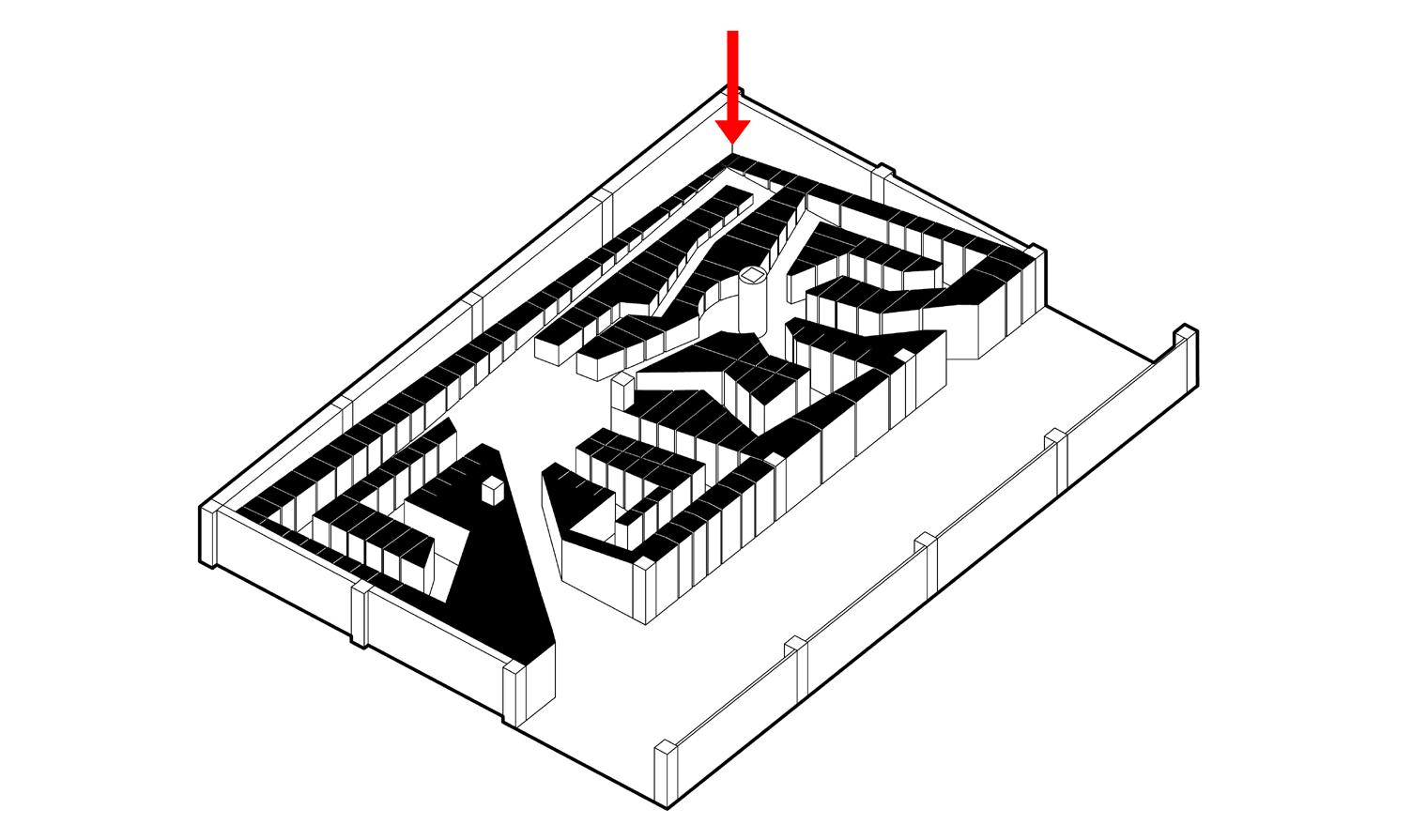
2 minute read
Flexible Office
by 張皓翔
With the placement of an oversized, habitable “shelf,” capable of storing away desks and chairs on its ground floor and doubling as a meeting or office space on its mezzanine level, the rest of the office space becomes purely flexible, achieving a truly flexible spatiality.
The brief for the “Office” was specific about two things, the required number of desks and for the space to be flexible. Uninterested in tailoring space for a specific company (which is by definition, the opposite of being flexible) and designating a room “multi-functional” to proclaim the whole design as such, I set out in search of a design that is flexible in a fundamental way. My approach was a deductive one. To achieve flexibility, it was essential to have the option to store away objects that took up the most space, which in this case were the desks. This resulted in the design and placement of the oversized, habitable “shelf.”
Advertisement
I have always aspired to create newness in my works.
“New” not in terms of being bizarre in form or innovative in technique, but in a fundamental way. To achieve such newness, it is crucial to escape dogmas, since all preconceived laws and prejudices could potentially be contaminated by misinterpretations or simply being outdated. Within a world where no concrete rules could be taken for granted, only basic conceptual Ideas could remain pure. Utilizing such Ideas as the basis of my design, I can create works that are free of given orthodoxy. For example, with Ideas such as “questioning the modern conception of the museum,” it is possible for me to generate works that are radically new in a fundamental way. I believe design should always be the materialization of such Ideas.
Irrefutably, I cannot deny the feasibility of conceiving a design without the use of Ideas; however, I believe its results will never match the creativity of the ones that do. Works that were conceived not from Ideas, but random sketches or the sheer imagination of an author might be interesting at first glance, yet would only be one more addition to our already overfilled design landscape. It would not be comprehensible to the public, and thus unable to engage in any discourse or challenge the boundaries of our design discipline. It would be as if it were without a soul.
One could even go further and say that the Idea might be even more important to designers than the design itself. A single Idea could generate an infinite number of designs, constantly evolving, inspiring, and influencing, whereas the design itself ends the moment its physical body is erected. Therefore, all my works began with an Idea, not with form or function, but always with an Idea.
1 It is important to differentiate between the “Idea” stressed here and that of the “Spatial idea.” The “Idea” described here is the overall fundamental Idea that could become the basis of design. Fundamental Ideas about program, behavior, or discipline-related topics. However, additional “Spatial ideas” would need to be derived from such “Ideas” to generate a form for the design. Idea






